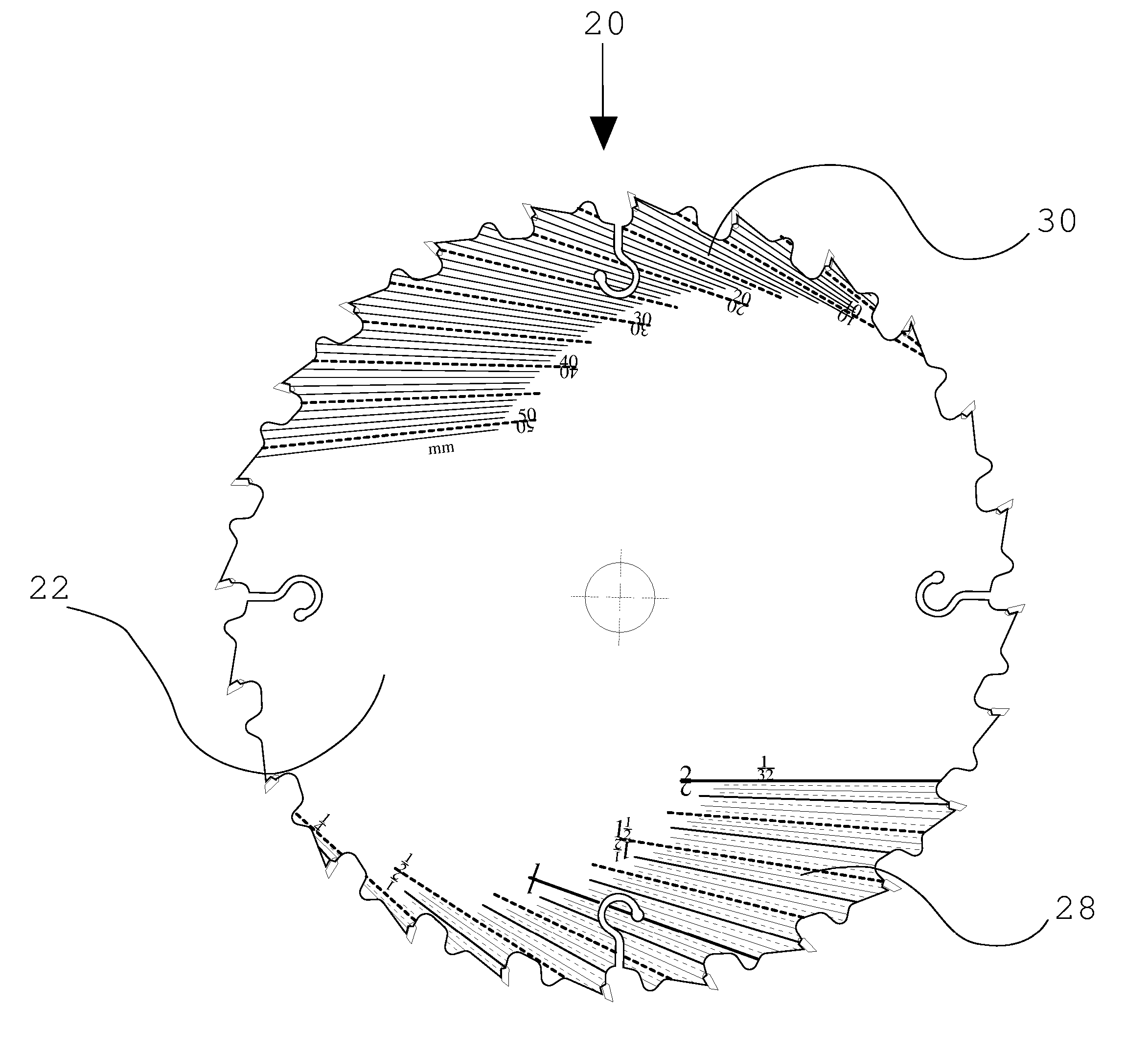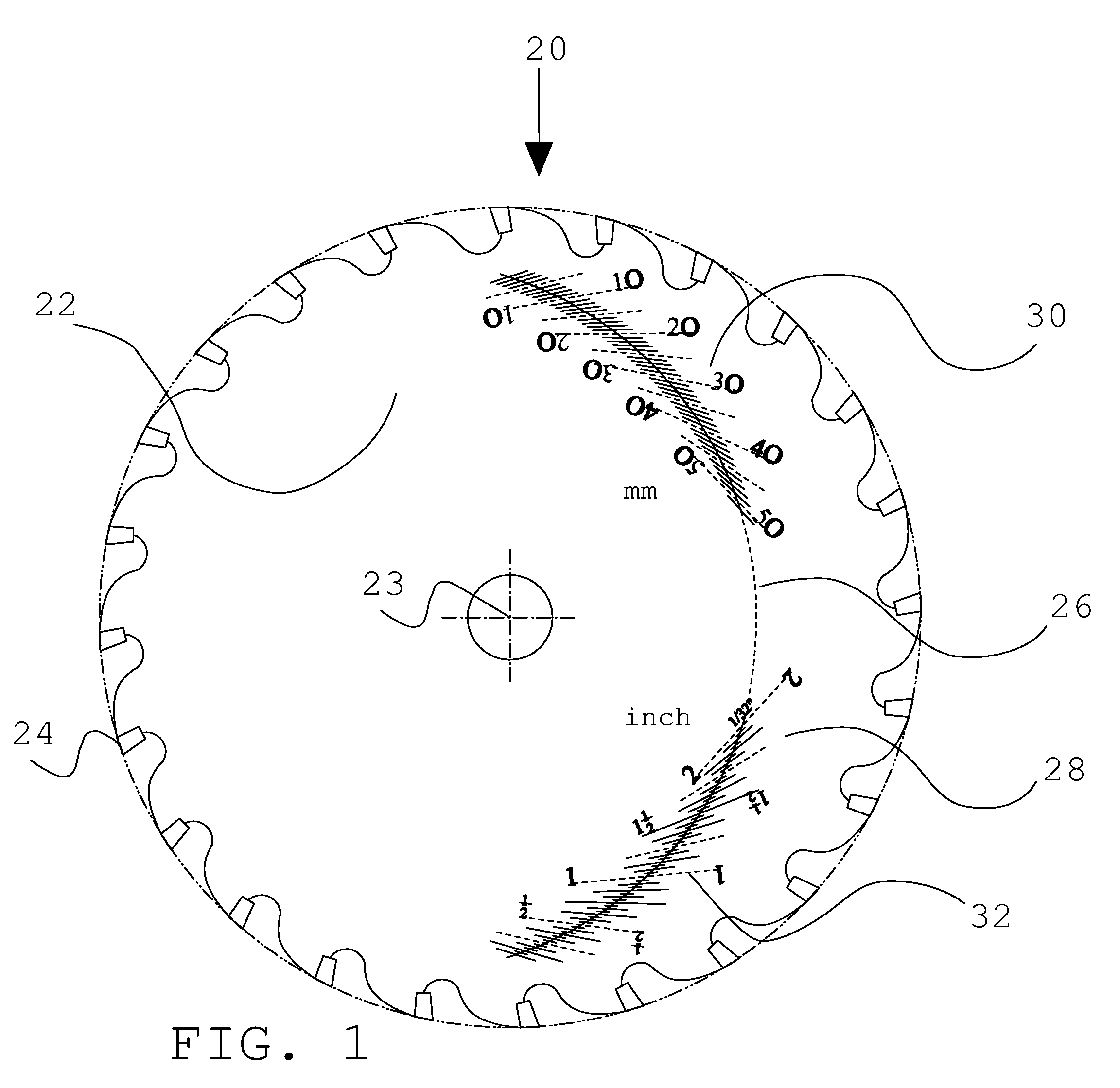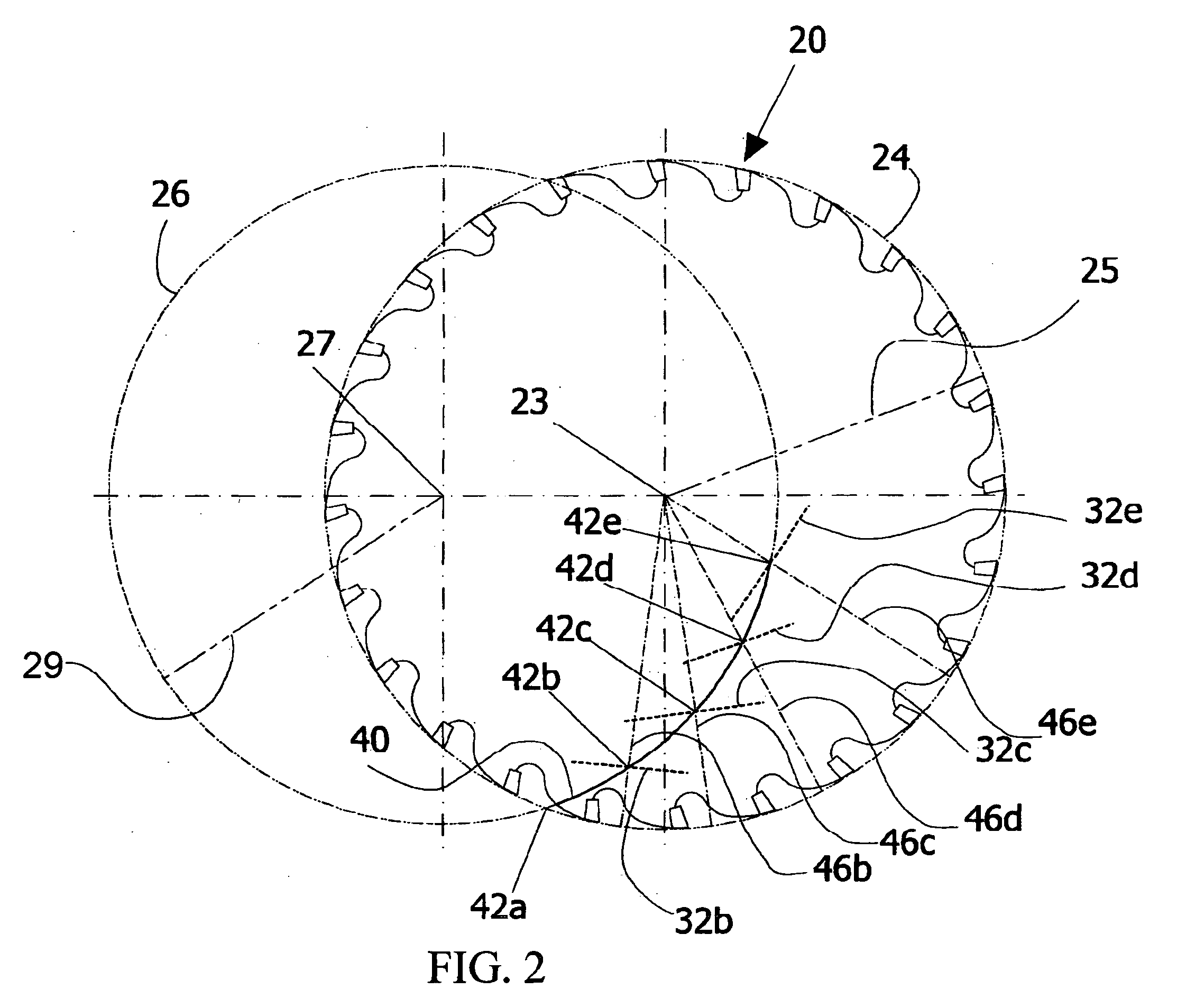Circular cutting blade with depth control scale
a technology of depth control scale and circular cutting blade, which is applied in the direction of band saws, manufacturing tools, saw chains, etc., can solve the problems of scales that are generally difficult to read and rarely resolved and the depth setting accuracy is increased.
- Summary
- Abstract
- Description
- Claims
- Application Information
AI Technical Summary
Benefits of technology
Problems solved by technology
Method used
Image
Examples
Embodiment Construction
[0022] Scales inscribed on either or both faces of circular cutting blades or dado blades are provided by the present invention for setting a circular saw to groove, or to cut into, a workpiece to a limited depth.
[0023]FIG. 1 shows a circular cutting blade 20 comprising a face 22 which extends from a center of the circular cutting blade 23 to a periphery bearing a cutting edge 24. An English units scale in inches 28 and a SI units scale in millimeters 30 are formed along a scale shape defining curve 26. The index marks 32 are bisected by the scale shape defining curve 26, wherein the angle formed by the index marks 32 and the scale shape defining curve 26 is different for each mark, to be explained with reference to FIG. 2 hereinafter. The line type and segment length of the index marks 32 are grouped by the scale unit increments to differentiate among the scale unit increments to enhance the ease of use. Numerals are inscribed on the cutting blade faces next to the indices definin...
PUM
| Property | Measurement | Unit |
|---|---|---|
| Distance | aaaaa | aaaaa |
| Diameter | aaaaa | aaaaa |
| Radius | aaaaa | aaaaa |
Abstract
Description
Claims
Application Information
 Login to View More
Login to View More - R&D
- Intellectual Property
- Life Sciences
- Materials
- Tech Scout
- Unparalleled Data Quality
- Higher Quality Content
- 60% Fewer Hallucinations
Browse by: Latest US Patents, China's latest patents, Technical Efficacy Thesaurus, Application Domain, Technology Topic, Popular Technical Reports.
© 2025 PatSnap. All rights reserved.Legal|Privacy policy|Modern Slavery Act Transparency Statement|Sitemap|About US| Contact US: help@patsnap.com



